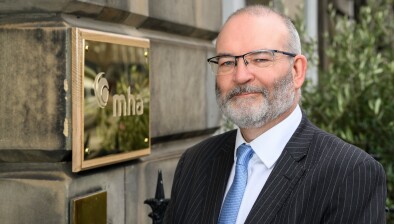Michael Reid: I am bankrupt… but my trustee still wants me to pay them money!

Michael Reid
Excluding the impact of being a partner in an unincorporated business which is declared bankrupt, the two main routes into bankruptcy are by an individual submitting the appropriate form to the accountant in bankruptcy (AiB – a civil servant based in Ayrshire) or a creditor lodging a petition in court which results in the sheriff granting a bankruptcy award, writes Michael Reid.
As readers may be aware, a standard bankruptcy in Scotland lasts for one year and there is an automatic discharge at that time unless the trustee determines that the bankrupt’s activities are such that the legal restrictions surrounding an individual who is bankrupt should continue for a longer period.
For example, if an individual had created large gambling debts and does not appear to have changed such habit, the trustee may decide that the person is not yet to be trusted with money in the short term. However, it is fair to say that the vast majority of individuals are discharged after 12 months, usually leaving the trustee in office for two main reasons:
- To continue realising assets e.g. equity in a house, and
- To collect a regular financial contribution from the bankrupt.
In Scotland, the state considers that while debt relief is available to an individual who finds that their debts have become wholly unmanageable, such individual should pay a financial contribution from ongoing income and based upon their ability to pay. This lasts for a four-year period.
Indeed, when submitting a bankruptcy application to the AiB, one of the pre-requisites for sequestration being awarded is that the individual agrees to pay a specific contribution. The initial application form includes a section for this to be determined.
The contribution can be paid weekly, monthly or however often is appropriate to a person’s circumstances but, as one might expect, it tends to be monthly in line with the receipt of a salary.
The contribution is calculated using something known as the Common Financial Tool (CFT). This is a detailed document and recognises that each person has individual income / expenditure characteristics, and, for example, it includes expenditure categories such as cigarettes, alcohol, club memberships and birthday / Christmas gifts.
A key point to note is that the CFT expects anyone completing it to be fair and reasonable and thus, if a person contends that they smoke 60 cigarettes a day and drink two bottles of wine each evening, the CFT will reject such expenditure and suggest a more reasonable alternative.
The CFT also takes into account household income because, for example, it is not fair for one earner (e.g. the bankrupt) to pay all the household costs such as rent, council tax, food and utilities while another resident also earns a salary but does not wish to contribute anything towards household costs.
This can sometimes prove a challenge if a bankrupt’s partner declines to provide financial information regarding income or another household resident in receipt of earnings does not wish to help pay for food / utilities. As might be appreciated, it makes it more difficult to create a practical position from which to calculate a fair contribution.
If an individual has been made bankrupt under the hand of a creditor, the contribution calculation follows the same CFT process but is not addressed until after the individual has been declared bankrupt. In the case of someone submitting their own application to the AiB, a bankruptcy award will not be granted if the individual declines to pay a contribution when the CFT makes it clear that a payment is possible.
Some individuals worry that it may not be possible to pay a contribution regularly over a four-year period e.g. loss of employment, long term illness, or change in family circumstances. The state recognises this and is prepared to grant a contribution holiday for a period appropriate to the situation in hand such that the four-year period is extended as necessary.
Equally, during a four-year period one might be fortunate enough to receive salary increases or experience other changes in financial circumstances in which case the bankrupt should advise the trustee such that the CFT can be revisited and an amended contribution calculated. If the bankrupt neglects to advise the trustee, the system has thought of this and anticipates that the trustee will send a status report to the bankrupt on a regular basis e.g. six monthly, in order to ensure that the contribution remains commensurate with the ability to pay.
Perhaps not unreasonably, the state considers that paying a contribution in addition to the trustee selling whatever assets exist demonstrates to society at large that an individual is facing up to the situation and paying what they can.
There are plenty of cases where a monthly contribution of, say, £200 is agreed which, over 48 months would create a pot of £9,600 when the creditor liabilities are over £50,000 i.e. the intention is not to make a bankrupt pay all debts in full but contribute as best they can towards the deficiency.
The issue of paying a contribution is always discussed with any person considering bankruptcy because, like it or not, it is part of the process from which one cannot shirk.

Michael Reid is a licensed insolvency practitioner and partner at MHA






